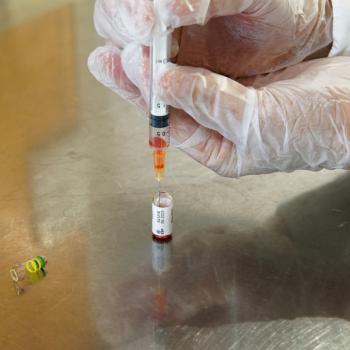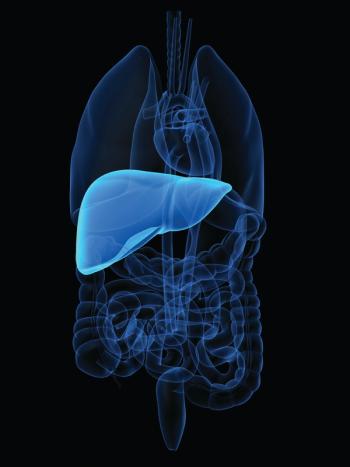
- ONCOLOGY Vol 20 No 5
- Volume 20
- Issue 5
Commentary (Kuban): Permanent Prostate Brachytherapy
Permanent prostate brachytherapy with or without supplemental therapies is a highly effective treatment for clinically localized prostate cancer, with biochemical outcomes and morbidity profiles comparing favorably with competing local modalities. However, the absence of prospective randomized brachytherapy trials evaluating the role of supplemental external-beam radiation therapy (XRT) has precluded the development of evidence-based treatment algorithms for the appropriate inclusion of such treatment. Some groups advocate supplemental XRT for all patients, but the usefulness of this technology remains largely unproven and has been questioned by recent reports of favorable biochemical outcomes following brachytherapy used alone in patients at higher risk. Given that brachytherapy can be used at high intraprostatic doses and can obtain generous periprostatic treatment margins, the use of supplemental XRT may be relegated to patients with a high risk of seminal vesicle and/or pelvic lymph node involvement. Although morbidity following brachytherapy has been acceptable, supplemental XRT has shown an adverse impact on long-term quality of life. The completion of ongoing prospective randomized trials will help define the role of XRT as a supplement to permanent prostate brachytherapy.
In the article entitled, "Permanent Prostate Brachytherapy: Is Supplemental External-Beam Radiation Therapy Necessary?" Merrick and coauthors address the prostate cancer controversy, "Which treatment is best-and for whom?" Whereas brachytherapy has assumed its proper place on the menu of options currently available to treat localized prostate cancer, the selection of optimal candidates for this modality remains controversial. With the many therapeutic choices available, it would behoove us to rely on the evidence-based approach whenever possible, as a lack of data can lead us to make decisions based on personal preference and opinion.
Ends of the Risk Spectrum
With regard to prostate brachytherapy, there is little contention about treatment choices for patients at the ends of the spectrum-ie, those at lowest and highest risk. Several studies have shown that good quality brachytherapy alone for patients with low-grade, low-stage, and low-prostate-specific antigen (PSA) prostate cancer consistently produces good results, equivalent to those achieved with both external-beam radiation therapy (XRT) and radical prostatectomy. Most experts agree that there is no need for the potential added financial cost and medical morbidity of supplemental XRT in this group of patients.
At the other end of the risk spectrum, in men with advanced-stage, high-grade, and high-PSA tumors-who have a significant risk of seminal vesicle and lymph node involvement-there is a need for a more regional approach, as suggested by the authors, as well as for a more systemic approach, as evidenced by studies documenting the benefit of hormonal therapy in this patient group. Therefore, patients in the intermediate-risk category remain the most controversial with regard to treatment approach.
Dilemma of the Intermediate Group
Part of the dilemma in dealing with this middle group is the fact that it is extremely heterogeneous. Using a large external-beam dataset with long-term follow-up, Thames and colleagues showed that the classic National Comprehensive Cancer Network-defined intermediate-risk group contained patients with very different outcomes. On the other hand, they found that recursive partitioning analysis chose multiple subcategories that grouped patients with like biochemical and clinical disease-free survival more homogeneously.[1] This work also showed that risk groupings were very dependent on dose: The higher the dose, the more adverse the risk factors associated with the same outcome. Analysis of a large brachytherapy dataset with long-term follow-up indicated that the quality of the implant, as represented by the amount of radiation received by 90% of the prostate volume (D90), does indeed have an impact on outcome, as Merrick et al suggest.[2]
There are various intermediate-risk group definitions, such as the one used by these authors (Gleason score ≥ 7, PSA ≥ 10 ng/mL, or clinical stage ≥ T2c). Unlike some other risk-group stratifications, more than one of these factors would put patients into the high-risk group, removing those with more adverse features. While some patients considered to have intermediate risk by this definition-for example, a patient with stage T1c, Gleason score = 7, PSA level = 5, and one biopsy core showing tumor-would likely do well with implant alone, do we really know where to draw that line? Do we have the evidence to feel certain that brachytherapy alone can measure up for the entire group of intermediate-risk patients?
Opposing Viewpoint
The authors present reasons for a positive response to these questions but do not objectively discuss the evidence for the opposite viewpoint. The potential for compromised outcome with brachytherapy is largely attributed to inadequate technique, which leads to less-than-ideal dose and dose distribution, especially when extracapsular margins are considered. While this may be a contributing cause, convincing evidence that it is the only factor related to outcome and that it can be overcome is lacking.
Figure 5 is used to illustrate the authors’ opinion that high-risk patients can also be treated with implant alone, if the technique is correct. However, I interpret this graph as showing that the two groups not receiving supplemental XRT fared considerably worse than the two groups who did receive such therapy, although the patients with margins and no XRT certainly did better than those without either margins or XRT.
Could these results also relate to patient selection, and would this not be a plausible explanation for outcome differences in the intermediate-risk group as well, especially knowing the heterogeneous nature of this group? An example is the study by Brachman and colleagues, which demonstrated that patients with a PSA of 10 to 20 ng/mL do not have as good an outcome with brachytherapy alone as with external-beam radiation alone.[3]
The authors conclude that they will no longer treat these patients with the modality that produced such inferior results. However, could the outcome with brachytherapy have improved if supplemental XRT was added? Since this is an experienced brachytherapy group, perhaps these results could be explained by the presence of risk factors in addition to the PSA level, making this group different from those referred to by Merrick et al. Or perhaps external-beam radiation provides better results than combined XRT and brachytherapy for some intermediate-risk patients, which could account for the difference in conclusions. This is speculative, of course, and as the authors of this review agree, only a randomized study-especially one with enough patients for subgroup stratification-is likely to provide substantial answers.
As the authors point out, there is increasing evidence of higher complication rates with the combination of external-beam radiation and brachytherapy. Many have suspected this, despite lack of published support. At a recent American Society for Therapeutic Radiology and Oncology annual meeting panel discussion, an audience poll showed that approximately one-third of attendees reported having had a patient with a serious complication, such as rectal ulcer or fistula, after combination therapy. Although this is anecdotal, it is nonetheless a concern. With the debate over alpha/beta ratios for both tumor and normal tissues, do we really know the dose equivalent of this combination?
Additional Questions
Finally, is there really a place for combination external-beam radiation and brachytherapy at all? Does what started as "the poor man's conformal therapy" have any indication when state-of-the-art, external-beam radiation is available? If a patient is not an acceptable candidate for brachytherapy alone, is there any advantage to combination therapy over external-beam radiation used alone? On the contrary, there would seem to be little preference for a 5-week course of external-beam radiation followed by brachytherapy when an entire external-beam radiation course could be completed with a few more weeks of treatment. With the trend toward hypofractionation, even moderate schedules would require only 5 to 6 weeks for completion of an entire external-beam radiation course. The beauty of implant therapy is that it is a one-time procedure; once external-beam radiation must be added, brachytherapy loses much of its appeal.
In summary, perhaps the answer to Merrick et al's question, "Is supplemental external-beam radiation therapy necessary?" is no, not unless state-of-the-art external-beam therapy is not available or there is an anatomic consideration preventing full-dose external-beam radiation. Perhaps the choice, instead, should be brachytherapy or external-beam radiotherapy as solitary modalities.
-Deborah A. Kuban, MD
Disclosures:
Dr. Kuban has received an unrestricted grant from Oncura.
References:
1. Thames HD, Kuban DA, Levy LB, et al: Prognostic risk group stratification for clinical and biochemical failure after external beam radiation of prostate cancer (abstract 166). Int J Radiat Oncol Biol Phys 60(suppl 1):S231, 2004.
2. Zelefsky MJ, Kuban DA, Levy LB, et al: Long-term multi-institutional analysis of stage T1-T2 prostate xancer treated with permanent brachytherapy (abstract 56). Int J Radiat Oncol Biol Phys 63(suppl 1):S33, 2005.
3. Brachman DG, Thomas T, Hilbe J, et al: Failure-free survival following brachytherapy alone or external beam irradiation alone for T1-2 prostate tumors in 2222 patients: Results from a single practice. Int J Radiat Oncol Biol Phys 48:111-117, 2000.
Articles in this issue
over 19 years ago
Whatever It Takesover 19 years ago
Docetaxel Approved for Advanced Stomach Cancerover 19 years ago
Primary Combined-Modality Therapy for Esophageal Cancerover 19 years ago
Rituximab Effective in Treating Chronic Graft-vs-Host Diseaseover 19 years ago
Fertility-Preserving Options for Cervical CancerNewsletter
Stay up to date on recent advances in the multidisciplinary approach to cancer.


















































































